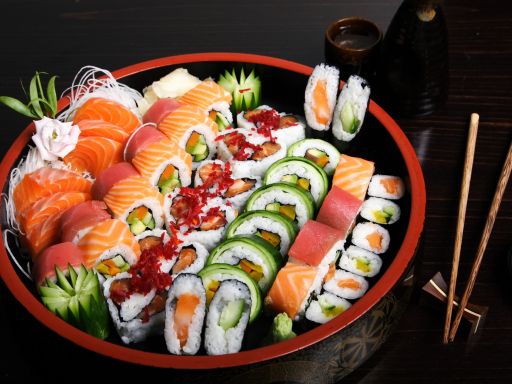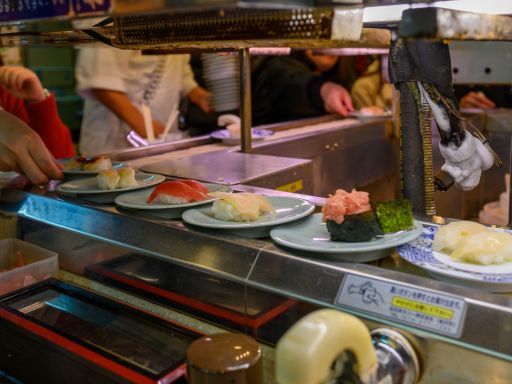The History of Sushi

Sushi, a quintessential Japanese dish that has captured the taste buds of people around the world, is a testament to the evolution of food culture and culinary artistry. This delectable delicacy, with its combination of vinegared rice, fresh fish, and other ingredients, has a fascinating history that spans centuries and continents.
Origins: Early Forms of Preservation
The origins of sushi can be traced back to ancient Southeast Asia, where fish and other seafood were preserved using a method known as “narezushi.” This technique involved packing fish between layers of salt and rice, allowing the fermentation process to occur. The rice was not meant to be consumed; rather, it acted as a natural preservative, allowing the fish to be stored for several months. Over time, the rice was discarded, and only the fish was consumed.
The Emergence of Edomae Sushi
Sushi as we know it today began to take shape during the Edo period (17th to 19th century) in Japan. With the growth of Edo (modern-day Tokyo) as a bustling coastal city, sushi transformed from a preservation technique into a delectable fast food. Street vendors and stalls offered “Edomae sushi,” which consisted of vinegared rice combined with various toppings, including seafood and vegetables.
One key development during this period was the use of vinegar-infused rice, which replaced the fermented rice of narezushi. This innovation not only enhanced the flavor of the rice but also reduced the time required for preparation, making sushi a more accessible and convenient option for city-dwellers.
Nigiri Takes Center Stage
The 19th century saw the emergence of nigiri sushi, a style that remains popular to this day. Nigiri sushi consists of small hand-pressed mounds of vinegared rice topped with slices of raw fish, seafood, or other ingredients. This creation is often attributed to Hanaya Yohei, a sushi chef who introduced the concept of consuming both the rice and the fish together.

Modernization and Globalization
Sushi underwent a significant transformation in the 20th century, as Japan modernized and the nation’s cuisine gained international attention. Following World War II, sushi became more accessible to the masses through the establishment of conveyor belt sushi restaurants (kaitenzushi), where plates of sushi were placed on a conveyor belt for customers to choose from.
Additionally, the 1960s and 1970s marked the beginning of sushi’s globalization. Sushi restaurants began to appear in major cities around the world, with chefs and restaurateurs adapting the traditional Japanese dish to suit local tastes. The incorporation of ingredients such as avocado, cream cheese, and cooked seafood led to the creation of “fusion” sushi rolls.
Sushi as a Culinary Art Form
In recent decades, sushi has evolved into a high-end culinary art form, often showcased in omakase-style dining experiences. Omakase, meaning “I’ll leave it to you,” involves placing the diner’s trust in the sushi chef to curate a series of dishes based on the freshest ingredients available that day. These intimate dining experiences highlight the craftsmanship, precision, and creativity of sushi chefs as they prepare each piece with meticulous attention to detail.
Sustainable Sourcing and Contemporary Trends
As environmental consciousness grows, the sushi industry has begun to prioritize sustainable sourcing. With concerns about overfishing and the health of marine ecosystems, responsible sushi restaurants seek to serve seafood that is ethically caught and farmed. Additionally, vegetarian and plant-based sushi options have gained popularity, catering to diverse dietary preferences.
Conclusion
The history of sushi is a captivating journey that spans centuries, cultures, and culinary innovations. From its humble beginnings as a preservation technique to its status as a global culinary sensation, sushi exemplifies the way food evolves in response to changing tastes, technological advancements, and cultural influences. As sushi continues to be embraced worldwide, it serves as a reminder of the interconnectedness of gastronomy and human creativity.
Copyright © 2024 Little Book of Japan
